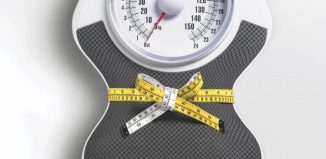Exercise: medical benefits versus weight loss
Good for disease prevention, not so good for weight loss
With the holiday dinners right around the corner, what would be better topic to discuss than exercise? To quell our guilt about Thanksgiving-dinner indiscretions, many of us will resolve to exercise to burn off the calories from this seismic meal and the smaller, calorically dense aftershock meals, whether with a vigorous family football game or with a more modest walk.
Before I go on, let’s take a little quiz. A little knowledge goes a long way in feeling good about your plans to potentially exercise.
Question #1: I can offset potential weight gain from a calorically dense meal by doing which of the following?
a) Exercising intensely for a short
duration
b) Exercising moderately for a long
duration
c) Exercising lightly for a long
duration
d) Exercise is unlikely to offset a
calorically dense meal
Question #2: Exercise is beneficial for which of the following? Choose all that apply.
a) Chronic kidney disease
b) Rheumatoid arthritis
c) Cognitive decline
d) Risk of falls
Unfortunately, the answer to question one is “d.” Exercise without dietary changes may not actually help many people to lose weight, no matter what the intensity or the duration (1). If it does help, it may only modestly reduce fat mass and weight for the majority of people. However, it may be helpful with weight maintenance. Therefore, it may be more important to think about what you are eating than to succumb to the rationalization that you can eat with abandon during the holidays and work it off later.
Don’t give up on exercise just yet, though. There is very good news: the answer to question two is that exercise has beneficial effects on all of the choices plus many others, including diabetes, cardiovascular disease, osteoporosis, fatigue, insomnia, and depression.
Let’s look at the evidence.
Weight loss attenuated
The well-known weight-loss paradigm in medicine is that when more calories are burned than consumed, we will tip the scale in favor of weight loss. The greater the negative balance with exercise, the greater the loss. However, the results of a recent study say otherwise. They show that in premenopausal women there was neither weight nor fat loss from exercise (2). This involved 81 women over a short duration, twelve weeks. All of the women were overweight to obese, although there was great variability in weight.
However, more than two-thirds of the women (55) gained a mean of 1 kilogram, or 2.2 pounds, of fat mass by the end of the study. There were a few who gained 10 pounds of predominantly fat. Significant variability was seen among the participants, ranging from significant weight loss to substantial weight gain. These women were told to exercise at the American College of Sports Medicine’s optimal level of intensity (3). This is to walk 30 minutes on a treadmill three times a week at 70 percent VO2max — maximum oxygen consumption during exercise— or, in other words, a moderately intense pace. The good news is that the women were in better aerobic shape by the end of the study and that women who had lost weight at the four-week mark were more likely to continue to do so by the end of the study. This was a preliminary study, so no definitive conclusions can be made.
Other studies have shown modest weight loss. For instance, in a meta-analysis involving 14 randomized controlled trials — the gold standard of studies — results showed that there was a disappointing amount of weight loss with exercise alone (4). In six months, patients lost a mean of 1.6 kilograms, or 3.5 pounds, and at 12 months, participants lost 1.7 kilograms, or about 3.75 pounds.
Weight maintenance
However, exercise may be valuable in weight maintenance, according to observational studies. Premenopausal women who exercised at least 30 minutes a day were significantly less likely to regain lost weight (5). When exercise was added to diet, women were able to maintain 30 percent more weight loss than with diet alone after a year in a prospective study (6).
Chronic kidney disease
Chronic kidney disease affects about 1 in 10 people in the United States, according to the Centers for Disease Control and Prevention (7). The U.S. Preventive Services Task Force has indicated that there is insufficient evidence to treat asymptomatic CKD. In fact, the American College of Physicians has said that asymptomatic CKD, which includes stages 3a and 3b, or moderate disease levels, should not be screened for, since the treatment risks outweigh the benefits, and lead to false positive results and unnecessary treatments (8).
However, in a recent trial, the results showed that walking regularly could reduce the risk of kidney replacement therapy and death in patients who have moderate to severe CKD, stages 3-5 (9). Yes, this includes stage 3, which most likely is asymptomatic. There was a 21 percent reduction in the risk of kidney replacement therapy and a 33 percent reduction in the risk of death when walkers were compared to non-walkers.
Walking had such an impressive impact, results were based on a dose-response curve. In other words, the more frequently patients walked in the week, the better the probability of preventing complications. Those who walked between one and two times per week had 17 and 19 percent reductions in death and kidney replacement therapy, respectively, while those who walked at least seven times per week saw 44 and 59 percent reductions in death and kidney replacement. These are substantial results. The authors concluded that the effectiveness of walking on CKD was independent of kidney function, age or other diseases.
Rheumatoid arthritis
Unfortunately, more than three quarters of patients with rheumatoid arthritis are affected with varying degrees of hand dysfunction. Well, it turns out that in a randomized controlled trial that included supervised (physiotherapist or occupational therapist) exercise for six sessions and exercise at home showed more than twice the improvement in hand function than those in the usual care group over a 12-month period (10). There were no changes in drug therapies or pain.
Therefore, while it is important to enjoy the holidays, it is food choices that will have the greatest impact on our weight and body composition. Exercise will not be the solution for most of us to overcome holiday weight gain. However, exercise is extremely beneficial for preventing progression of chronic disorders, such as CKD. Improved functioning of the hand with exercise in rheumatoid arthritis patients reduces disability.
So, by all means, exercise during the holidays, but also focus on more nutrient-dense foods. At the least, strike a balance rather than eating purely calorically dense foods. They are unlikely to be rationalized with exercise.
References
(1) update.com. (2) J Strength Cond Res. Online Oct. 28, 2014. (3) ACSM.org. (4) Am J Med. 2011;124(8):747. (5) Obesity (Silver Spring). 2010;18(1):167. (6) Int J Obes Relat Metab Disord. 1997;21(10):941. (7) cdc.gov. (8) Ann Intern Med. online October 21, 2013. (9) Clin J Am Soc Nephrol. 2014 Jul;9(7):1183-9. (10) Lancet. online Oct. 9, 2014.
Dr. Dunaief is a speaker, author and local lifestyle medicine physician focusing on the integration of medicine, nutrition, fitness and stress management. For further information, go to the website www.medicalcompassmd.com and/or consult your personal physician.






